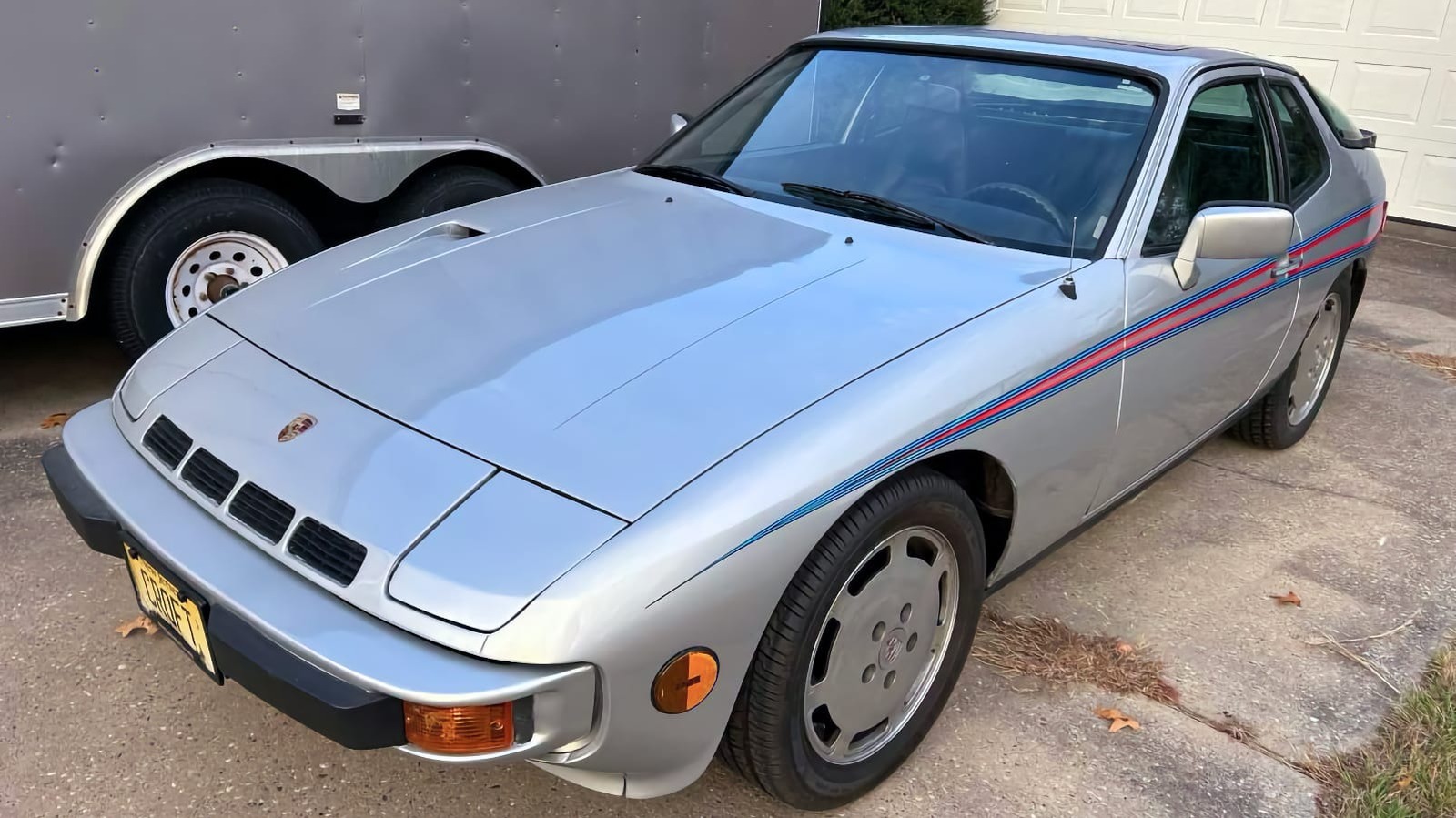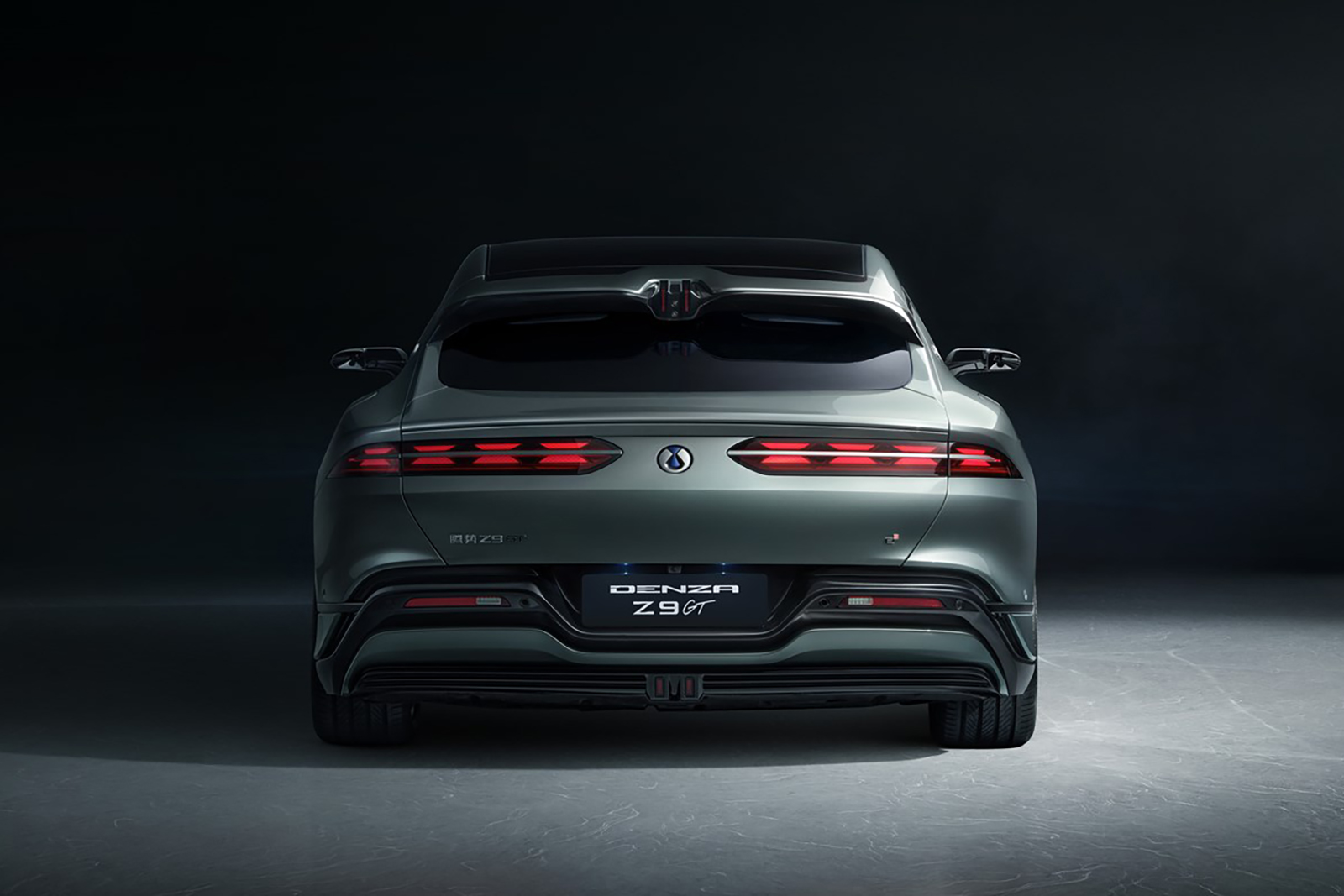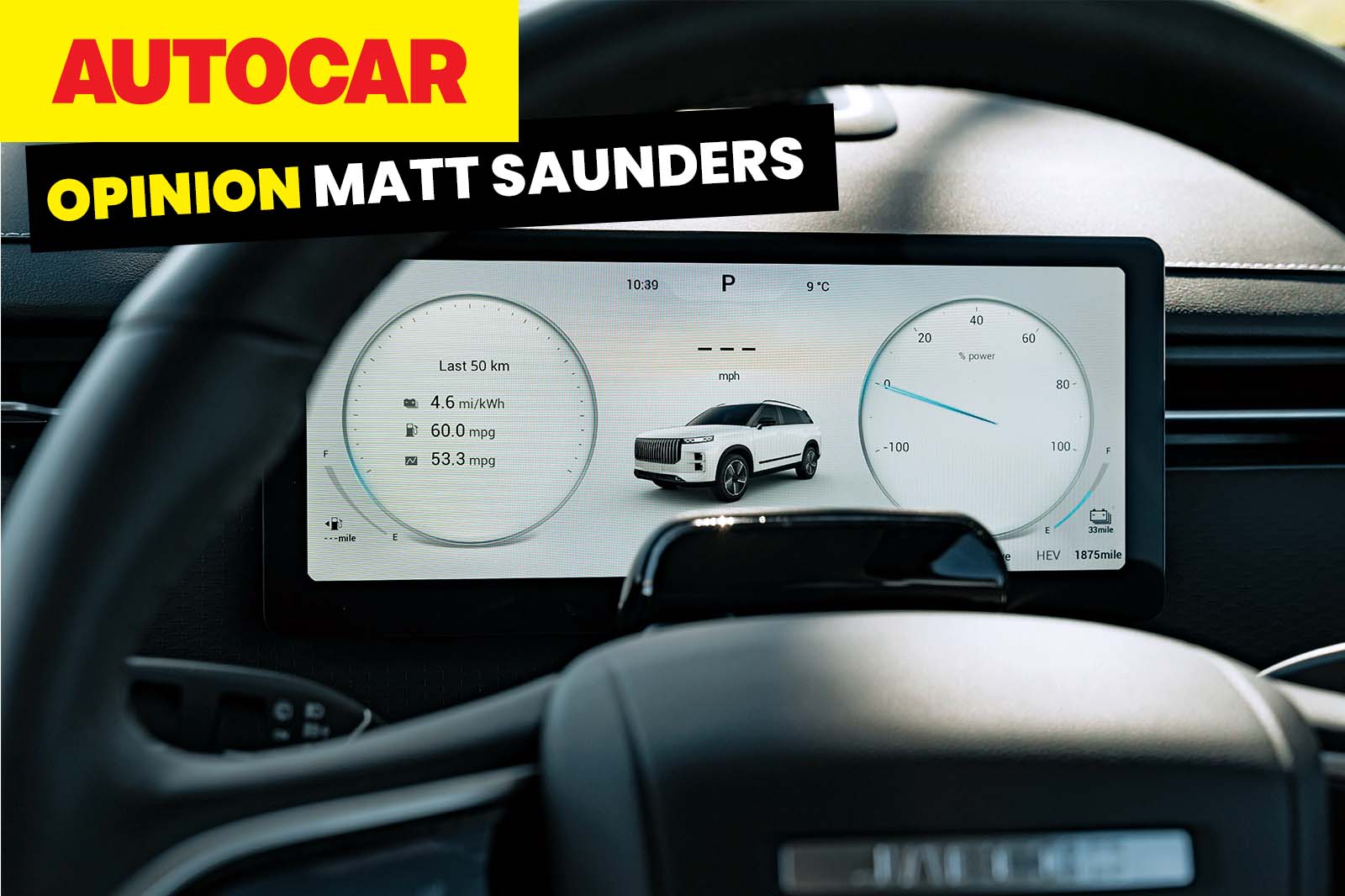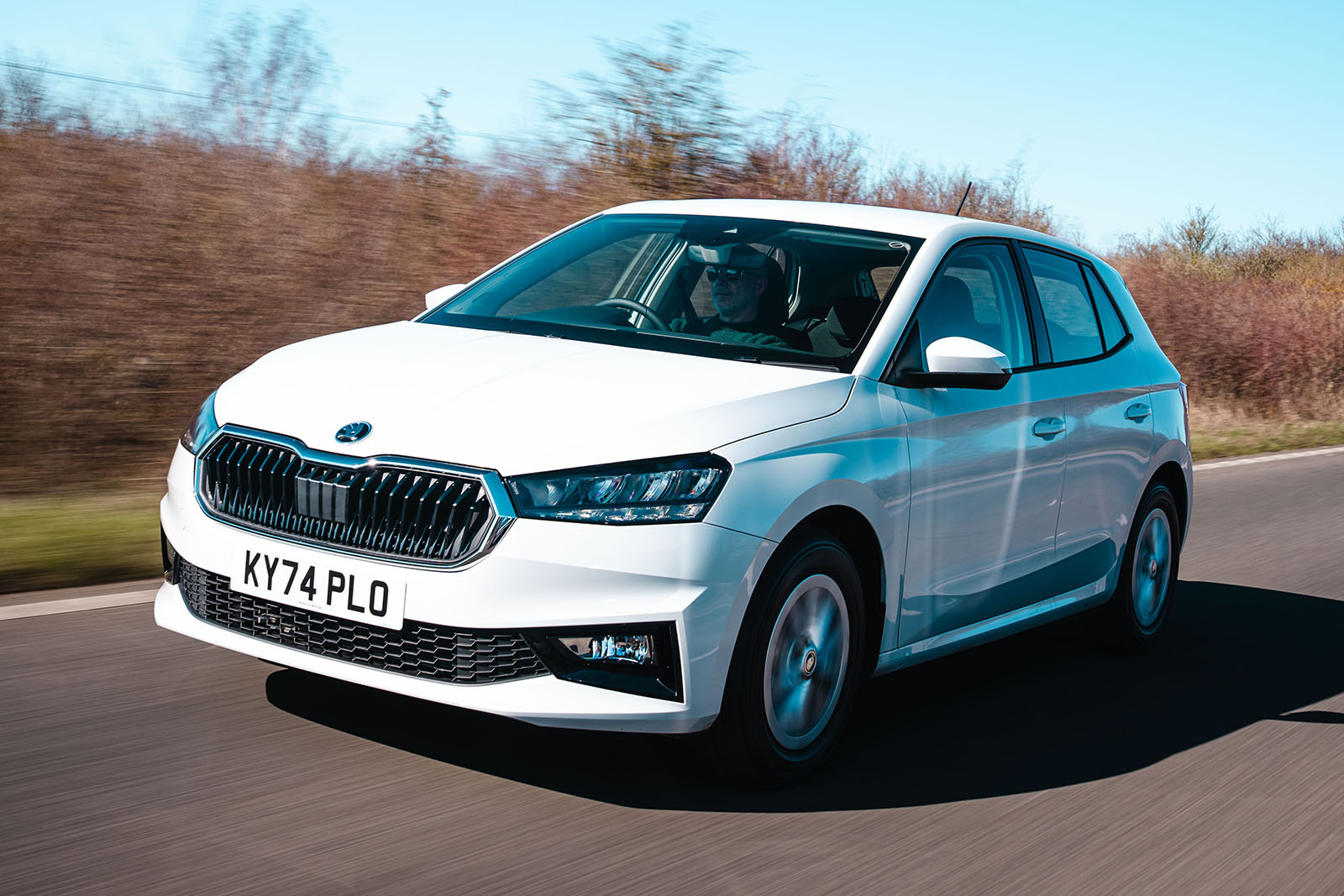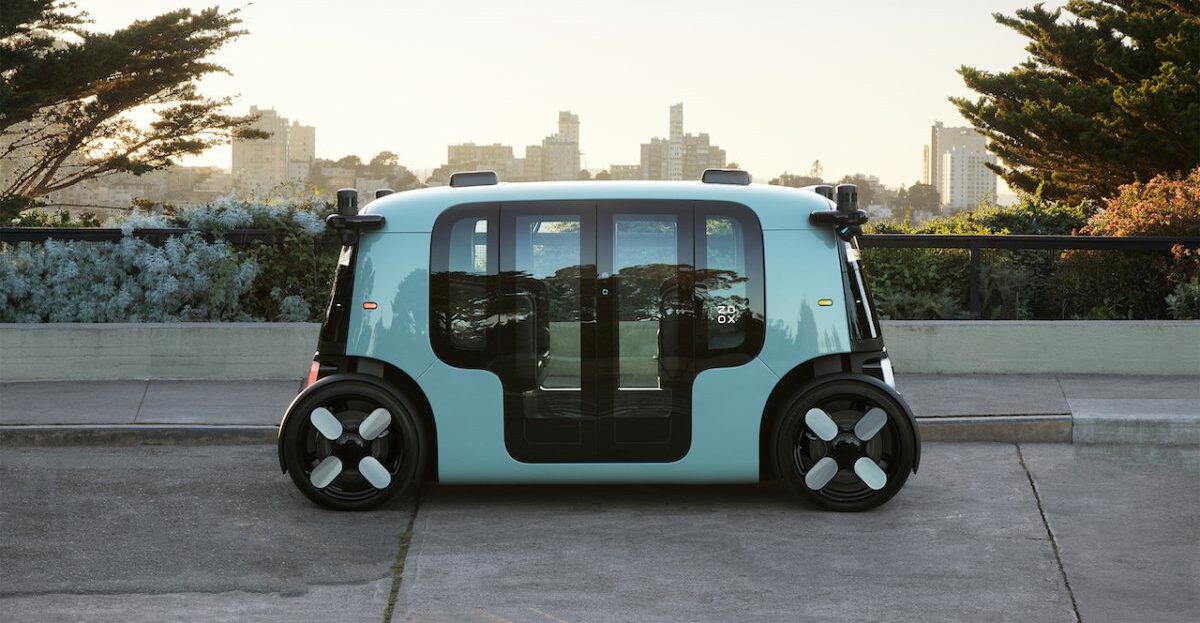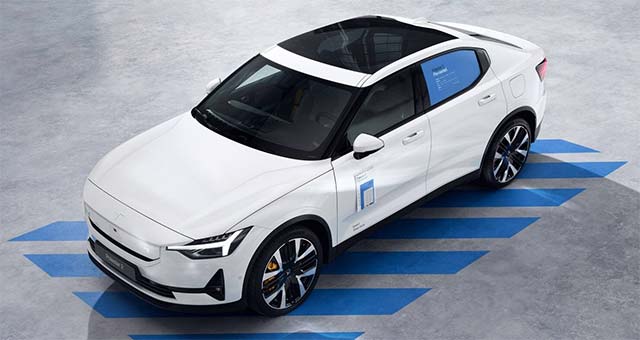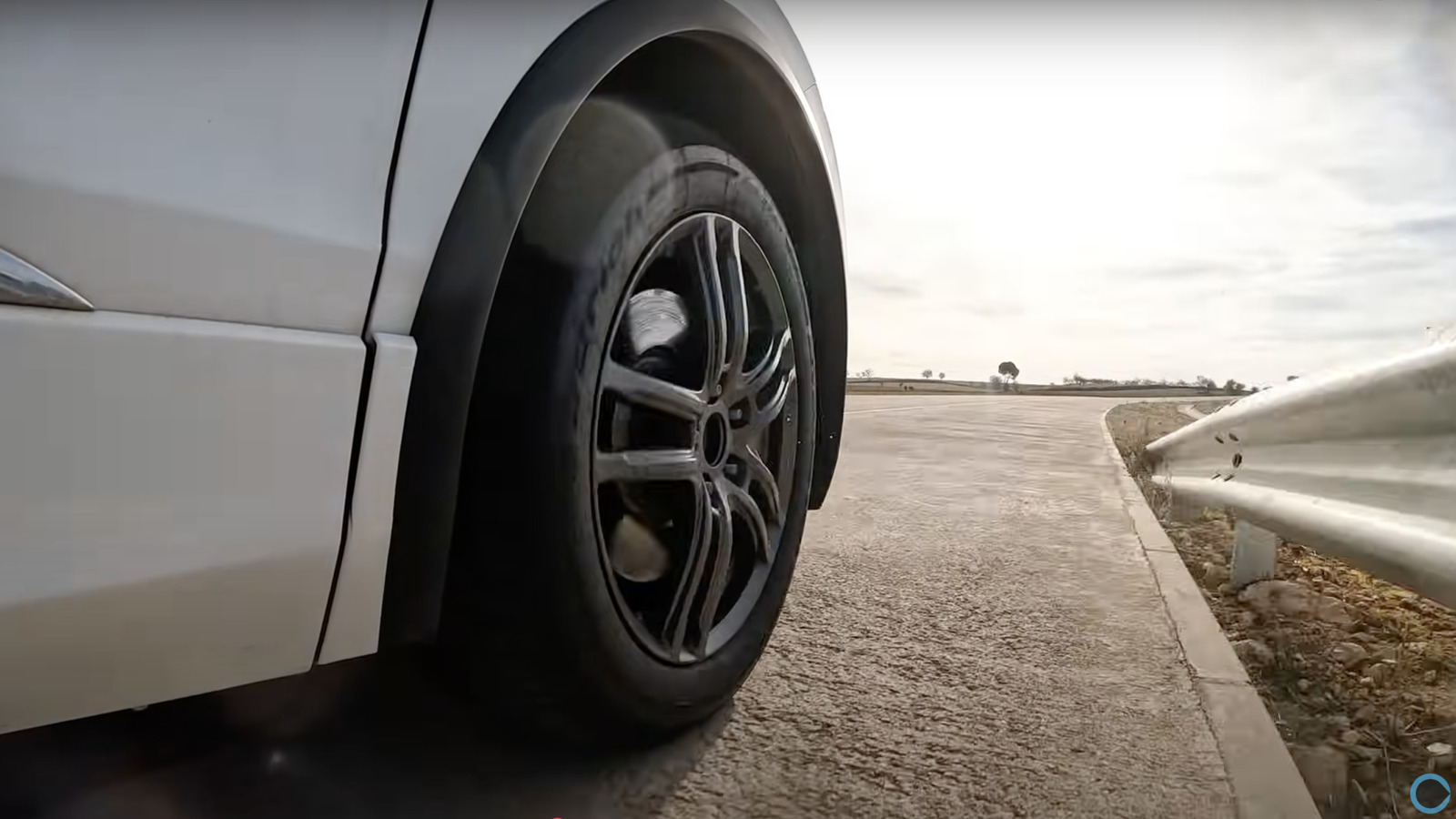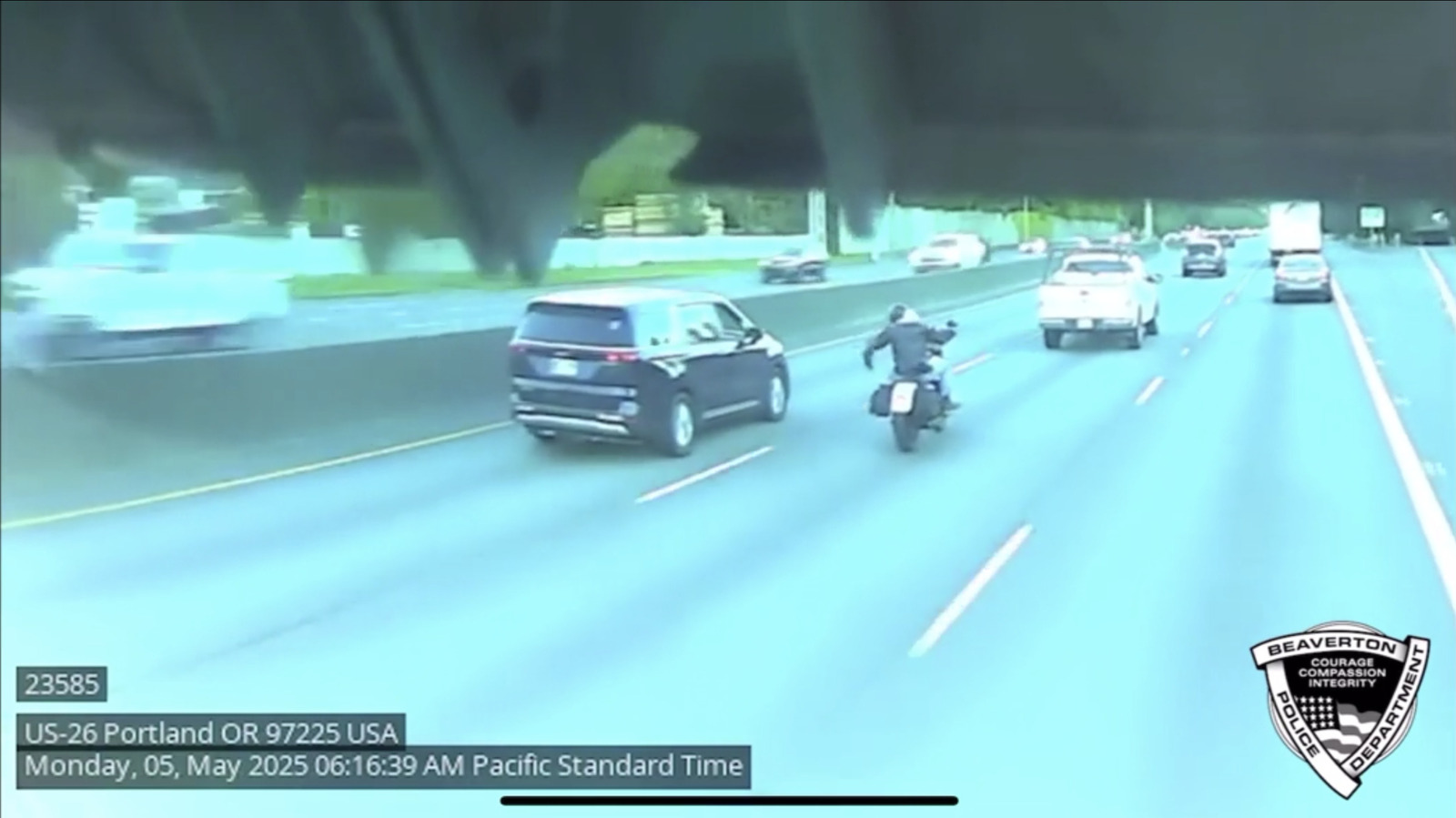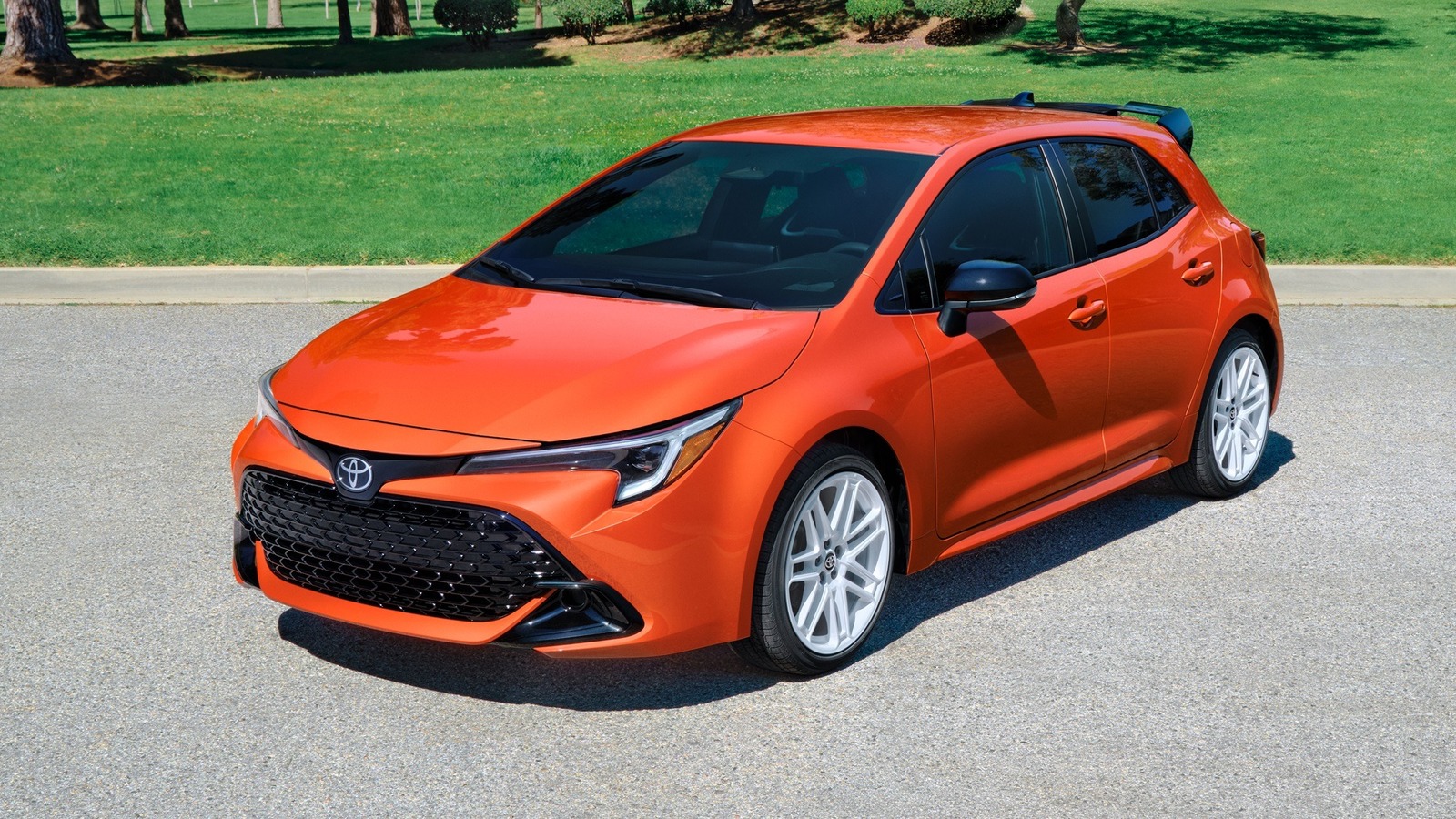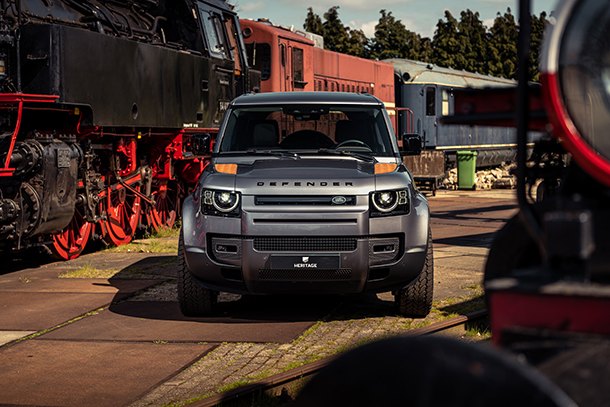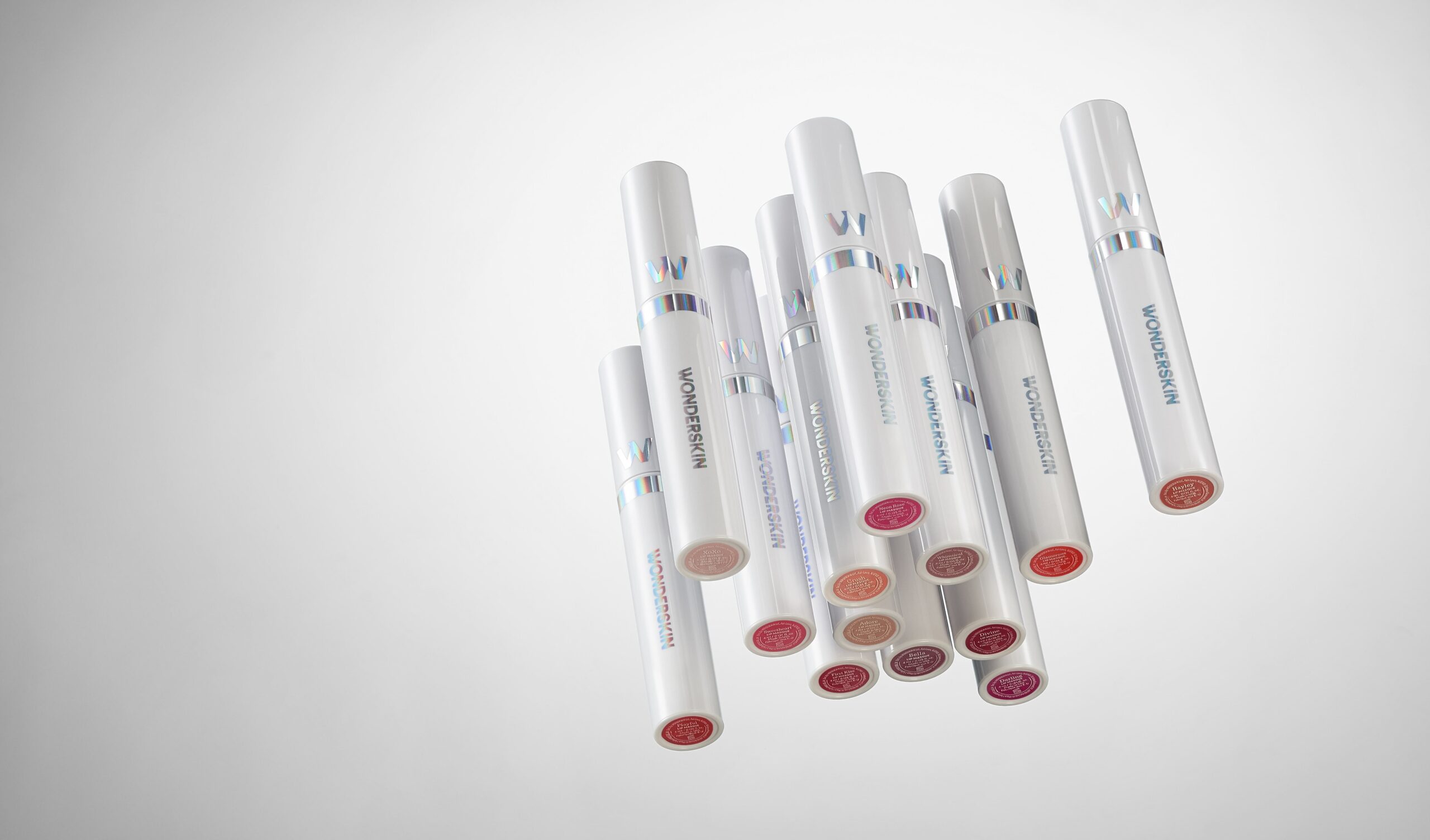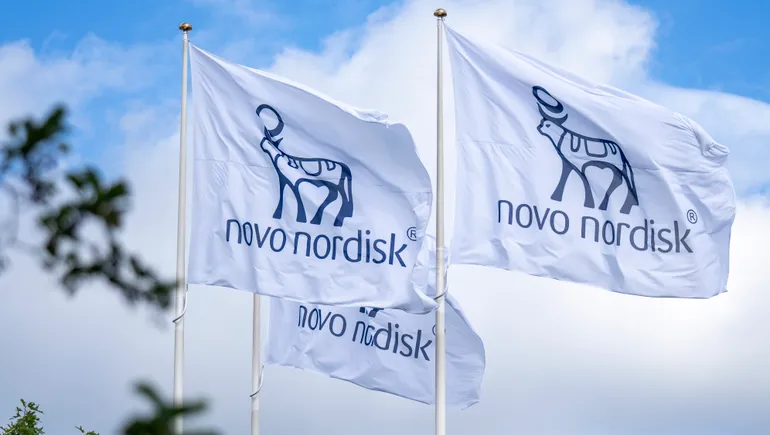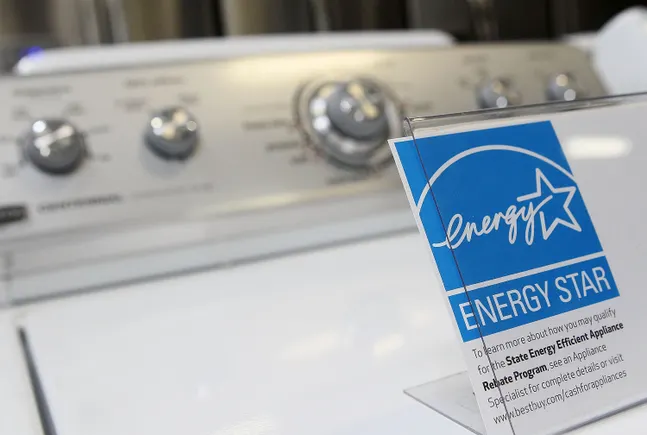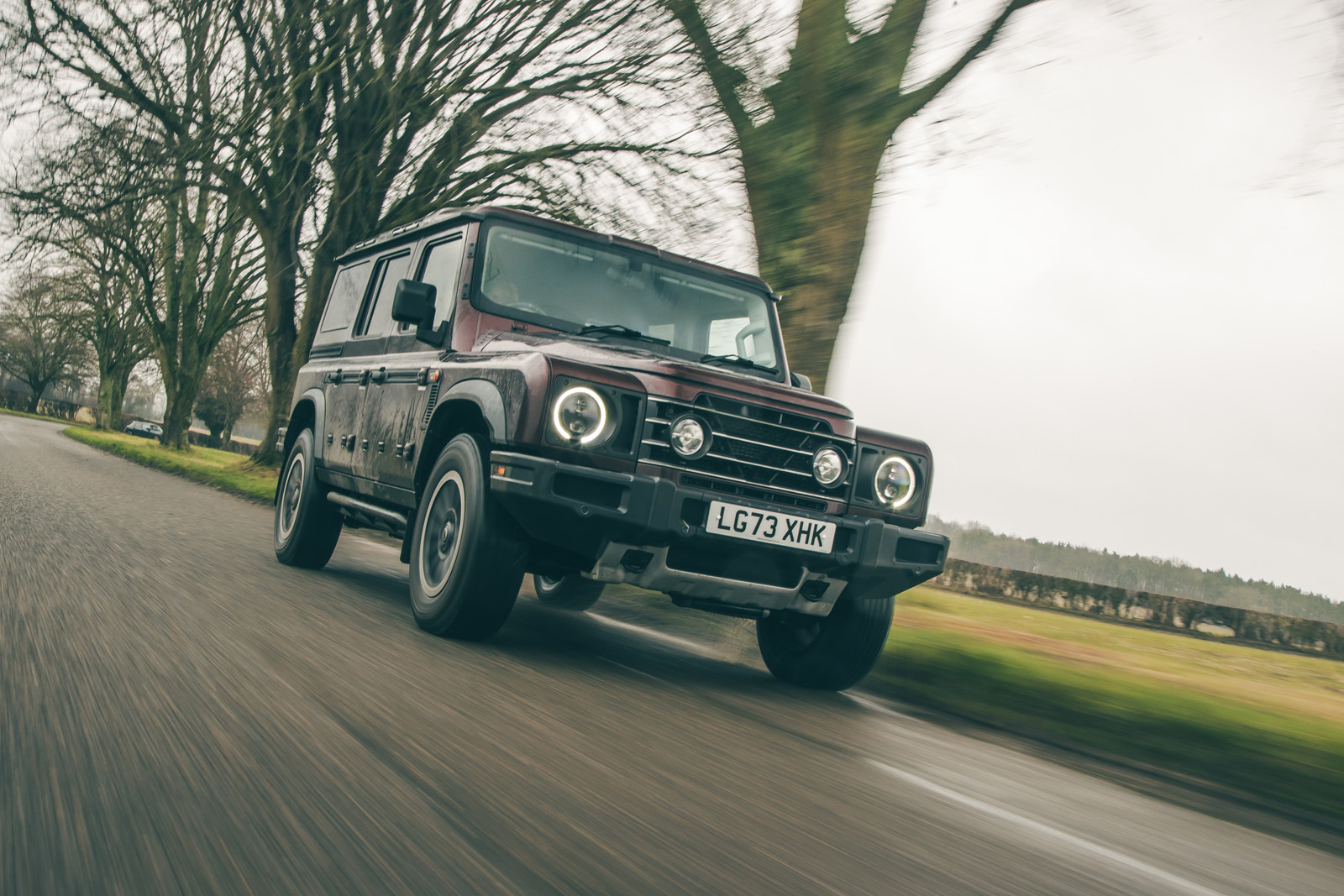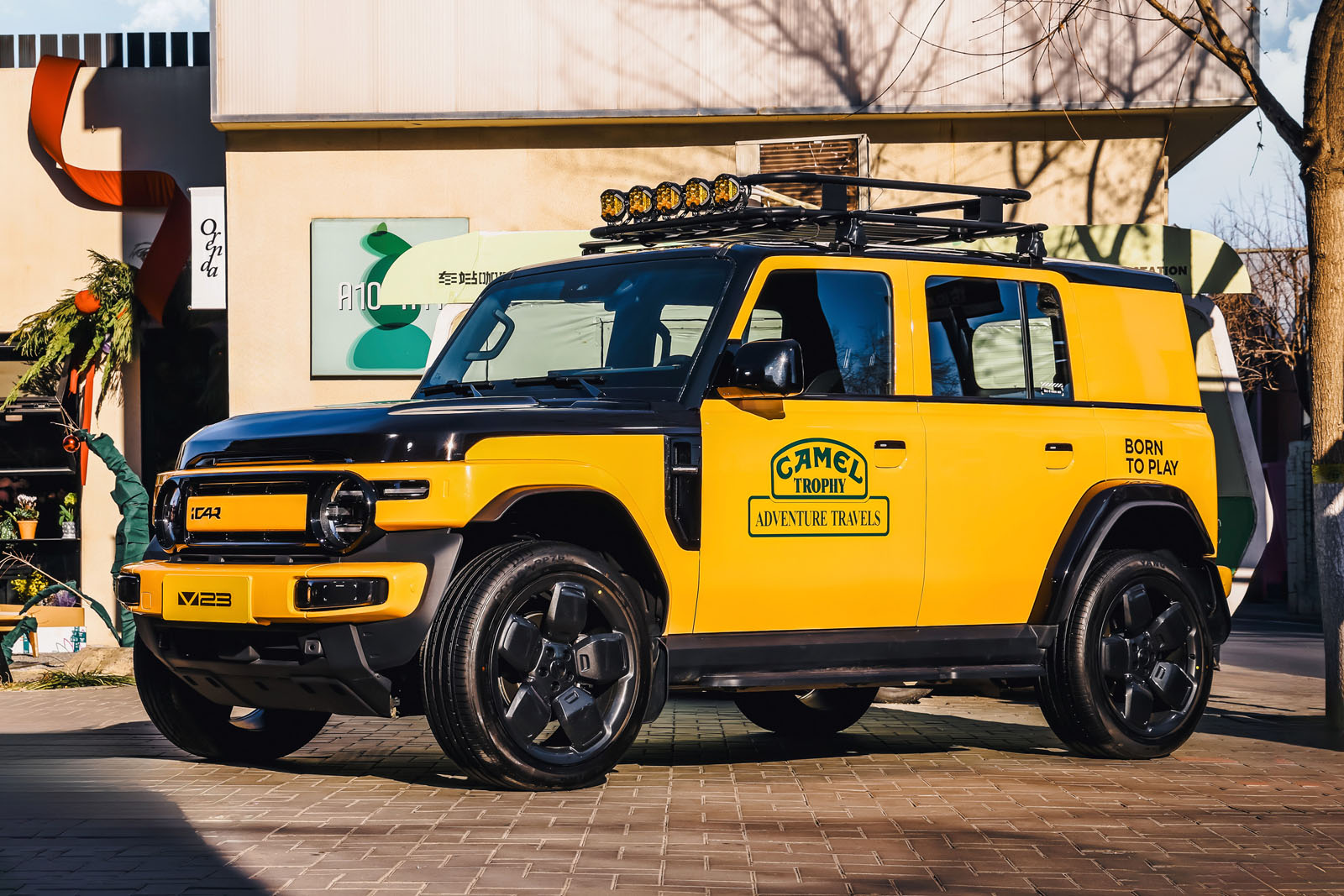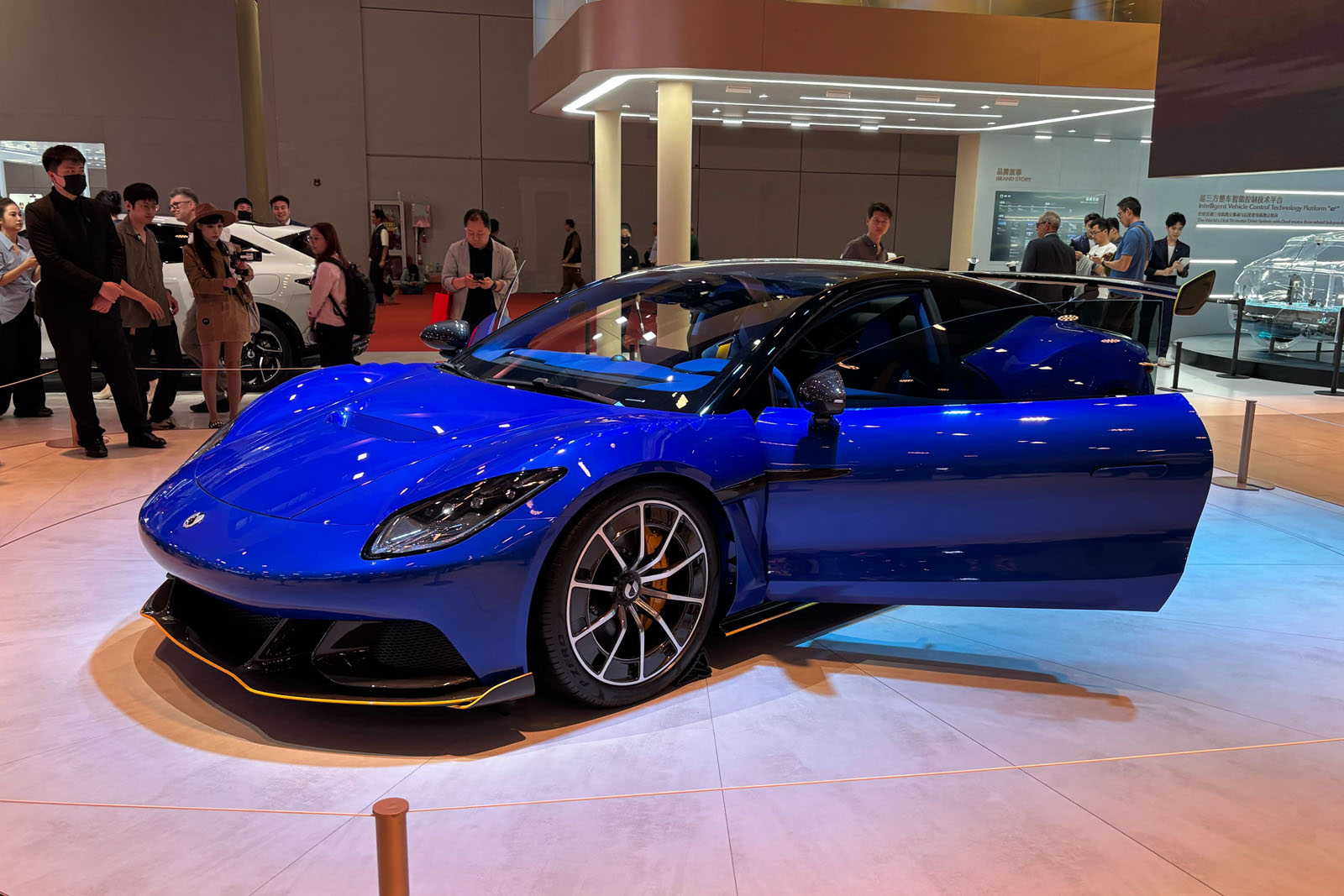Volkswagen Tiguan 2025 long-term test
We wanted to know why this SUV is so popular. Now we have our answer Do you believe in real-life NPCs? Sorry, to explain: there’s an only semijoking theory online that ‘non-player characters’, which simply and unconsciously follow a coded set pattern, have escaped the confines of video games. And I do reckon that a lot of evidence can be gathered to back up the theory – not least from British roads. The Volkswagen Tiguan has been the bestselling Volkswagen model globally since 2019, shifting many millions of them in that time. Indeed, I started seeing third-generation examples everywhere mere months after it went on sale. But I’ve yet to meet a car lover who can convincingly explain why, making me wonder if it’s NPCs buying all these SUVs. But what is it about this particular one that inspires such excitement in so many non-enthusiasts that they gladly pay extra to have it over that legendary all-rounder, the Volkswagen Golf? Looks? Handling? Performance? Practicality? None of those aspects seems much better to me on paper. If anything, on first impression, they all seem to be slightly worse (and actually, to be brutally honest, I think this Tiguan looks less appealing than the previous one). And my road tester colleagues adjudged it to be competitive with its direct rivals but no better than that. So perhaps we really can blame the whim of whoever coded this game we call life? Yes, this demands a thorough investigation. My new Tiguan is specified in sporty R-Line trim. That would have worried me, given that you can always expect bigger wheels (20in in this case and curiously named after the city of Leeds) to hamper a car’s ride comfort, but thankfully the optional Dynamic Driving Package has been fitted here too, including Dynamic Chassis Control Pro, so I can soften the damping to counteract that at least somewhat. That pack also includes Dynamic Steering, which means the gearing changes depending on the driving scenario, again in an effort to allow this prosaic family SUV to wear its R outfit a bit more comfortably. There is a Vehicle Dynamics Manager too – not new from Volkswagen but new to the Tiguan, controlling elements of the damping and the electronic differential locks. The powertrain, however, is the entry-level option: Volkswagen’s routine 1.5-litre four-cylinder turbo petrol engine with a mildhybrid system and a seven-speed dual-clutch automatic gearbox, promising 148bhp and 43.2mpg combined – reasonable, I suppose, although a 9.1sec 0-62mph time does seem quite long for an R-badged car. The proper Tiguan R didn’t survive the generation changeover, but you can still get a very healthy 261bhp in the four-wheel-drive 2.0 TSI, if you want bite as well as bark. That seems logical to me, but then it does cost £8000 more, and both Tiguans will just get stuck in the same rush-hour queues anyway. There’s also, unusually and commendably, still a diesel offered in the Tiguan range – a 2.0-litre four – as well as two company car tax-friendly plug-in hybrids. Like everyone else at Autocar, and indeed many customers, I was, shall we say, not a fan of the new dashboard interface that the Volkswagen Group began introducing with the electric ID 3 in 2019. Both the Mk8 Golf and its Seat Leon sibling drove me mad at their 2020 launches with seriously glitchy software, a dearth of buttons and touch-sensitive ‘sliders’ for controlling the internal temperature. Thankfully, although that basic design persists in the Tiguan, I’ve so far not had any trouble with the ones and zeroes, and the sliders are at least backlit at night. There are proper buttons on the steering wheel too, rather than those infuriating kind-of-buttons in the ID 3 and Golf – a relief for anyone who ever wants to skip a song. As standard, the Tiguan’s touchscreen measures 12.9in across, but here it has been expanded to a full 15.0in by the £1130 Infotainment Pack Plus – which also includes a head-up display to supplement the usual 10.3in digital instrumentation display. My preference would be a small, dial-controlled screen, but if you’re going to make me lean forward and tap, then the bigger the better, really. So, are all those Tiguan buyers really unthinkingly following a set coded pattern, or am I just af icted with a bad case of cynicism and main character syndrome? A journey of discovery, whether self- or otherwise, starts here. Update 2 Why has Volkswagen integrated ChatGPT into its latest cars, I wonder aloud? “Volkswagen may have integrated ChatGPT into its cars to enhance in-car virtual assistant capabilities, improve user experience and offer advanced AI-driven features for communication and assistance.” There we have it, straight from the horse’s mouth. Very meta. But even the horse itself isn’t entirely sure why, it would seem, and as so often is the case when artificial intelligence is concerned, the explanation is mostly jargon. In plain English, then, this AI integration means you can issue voice commands to the car – to cha
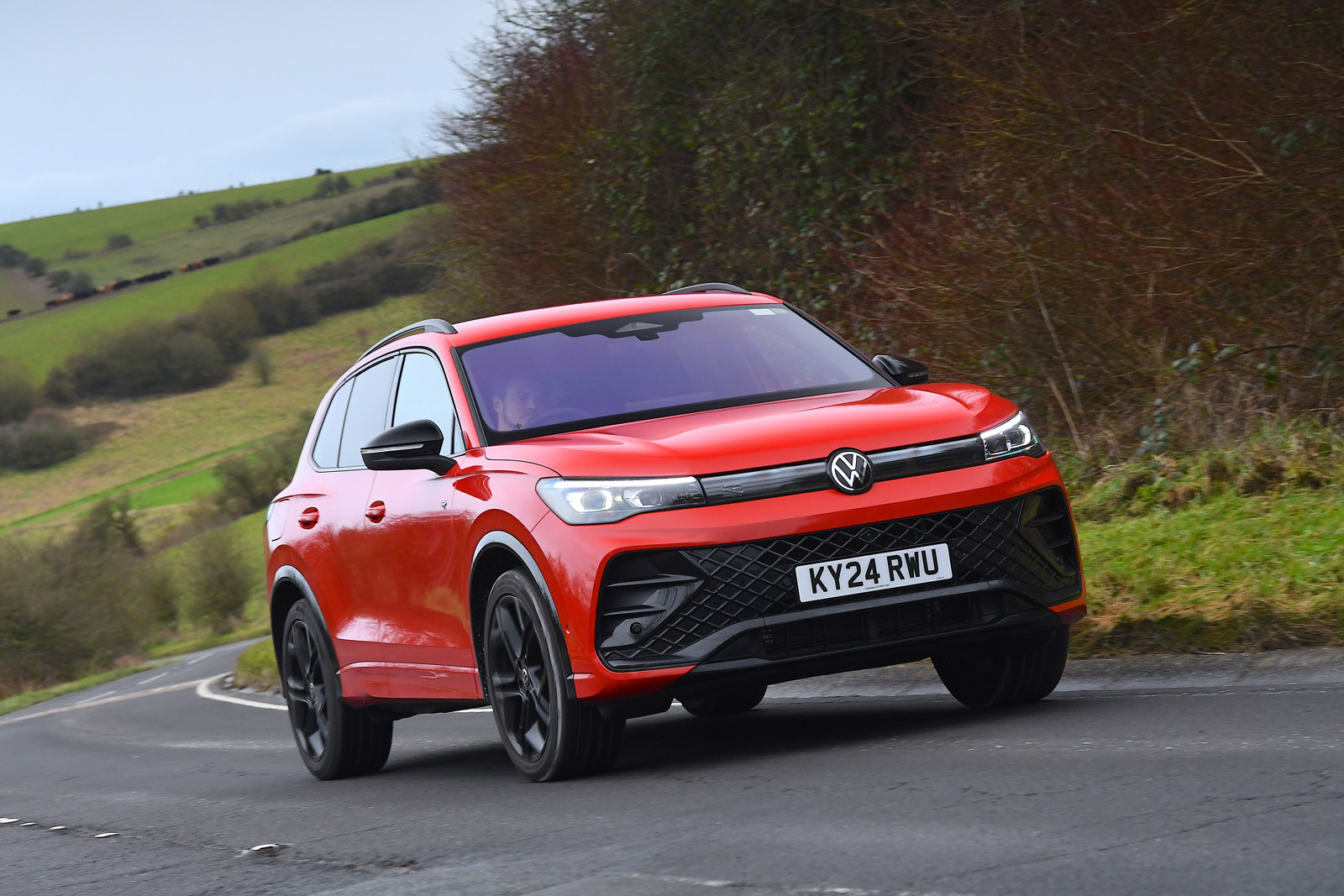
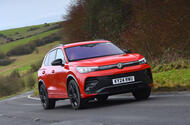 We wanted to know why this SUV is so popular. Now we have our answer
We wanted to know why this SUV is so popular. Now we have our answer
Do you believe in real-life NPCs? Sorry, to explain: there’s an only semijoking theory online that ‘non-player characters’, which simply and unconsciously follow a coded set pattern, have escaped the confines of video games.
And I do reckon that a lot of evidence can be gathered to back up the theory – not least from British roads.
The Volkswagen Tiguan has been the bestselling Volkswagen model globally since 2019, shifting many millions of them in that time.
Indeed, I started seeing third-generation examples everywhere mere months after it went on sale. But I’ve yet to meet a car lover who can convincingly explain why, making me wonder if it’s NPCs buying all these SUVs.
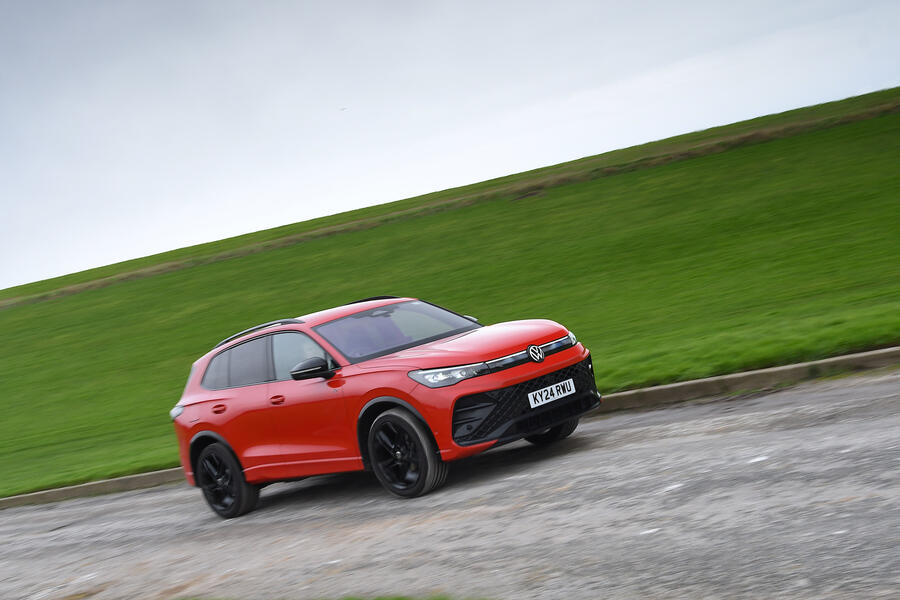
But what is it about this particular one that inspires such excitement in so many non-enthusiasts that they gladly pay extra to have it over that legendary all-rounder, the Volkswagen Golf?
Looks? Handling? Performance? Practicality? None of those aspects seems much better to me on paper. If anything, on first impression, they all seem to be slightly worse (and actually, to be brutally honest, I think this Tiguan looks less appealing than the previous one).
And my road tester colleagues adjudged it to be competitive with its direct rivals but no better than that. So perhaps we really can blame the whim of whoever coded this game we call life? Yes, this demands a thorough investigation.
My new Tiguan is specified in sporty R-Line trim. That would have worried me, given that you can always expect bigger wheels (20in in this case and curiously named after the city of Leeds) to hamper a car’s ride comfort, but thankfully the optional Dynamic Driving Package has been fitted here too, including Dynamic Chassis Control Pro, so I can soften the damping to counteract that at least somewhat.
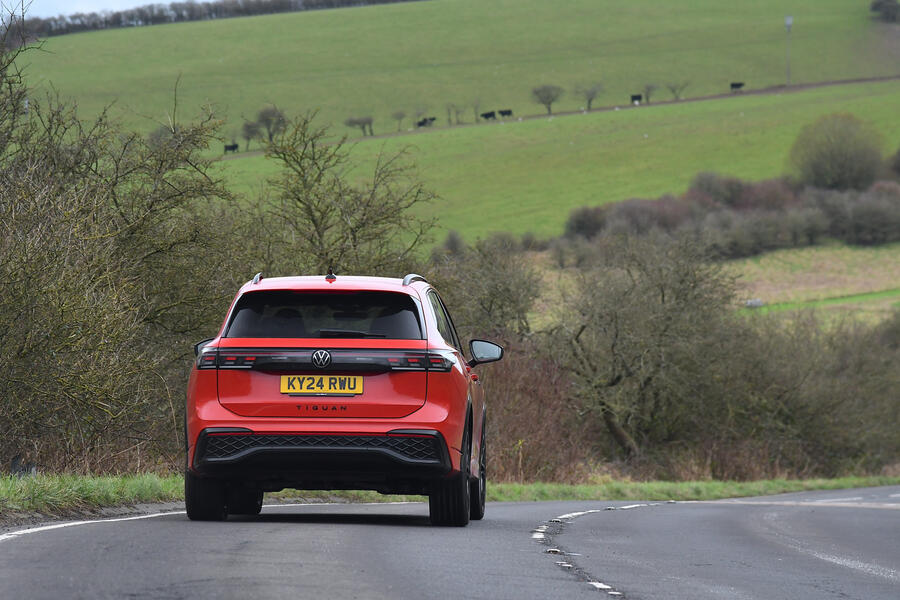
That pack also includes Dynamic Steering, which means the gearing changes depending on the driving scenario, again in an effort to allow this prosaic family SUV to wear its R outfit a bit more comfortably.
There is a Vehicle Dynamics Manager too – not new from Volkswagen but new to the Tiguan, controlling elements of the damping and the electronic differential locks.
The powertrain, however, is the entry-level option: Volkswagen’s routine 1.5-litre four-cylinder turbo petrol engine with a mildhybrid system and a seven-speed dual-clutch automatic gearbox, promising 148bhp and 43.2mpg combined – reasonable, I suppose, although a 9.1sec 0-62mph time does seem quite long for an R-badged car.
The proper Tiguan R didn’t survive the generation changeover, but you can still get a very healthy 261bhp in the four-wheel-drive 2.0 TSI, if you want bite as well as bark.
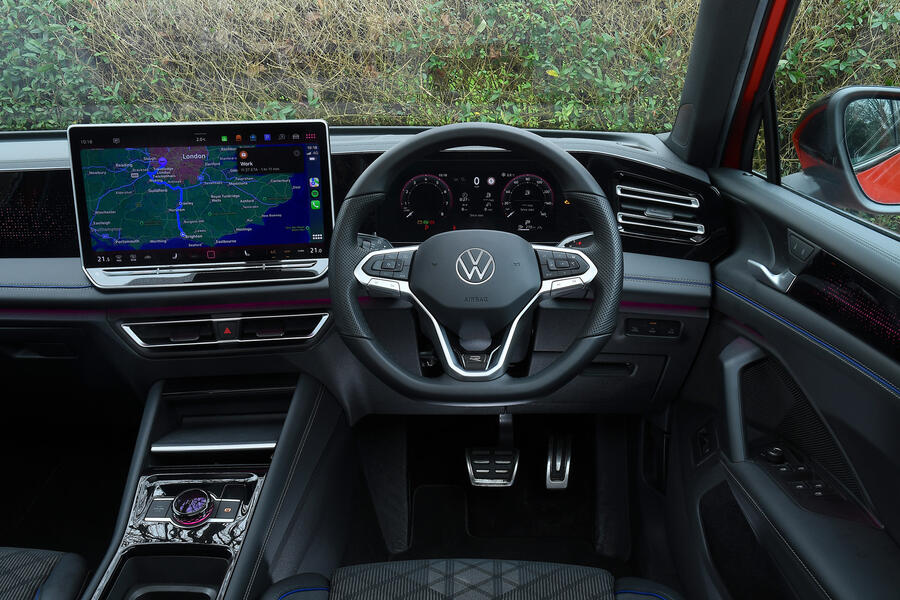
That seems logical to me, but then it does cost £8000 more, and both Tiguans will just get stuck in the same rush-hour queues anyway. There’s also, unusually and commendably, still a diesel offered in the Tiguan range – a 2.0-litre four – as well as two company car tax-friendly plug-in hybrids.
Like everyone else at Autocar, and indeed many customers, I was, shall we say, not a fan of the new dashboard interface that the Volkswagen Group began introducing with the electric ID 3 in 2019.
Both the Mk8 Golf and its Seat Leon sibling drove me mad at their 2020 launches with seriously glitchy software, a dearth of buttons and touch-sensitive ‘sliders’ for controlling the internal temperature.
Thankfully, although that basic design persists in the Tiguan, I’ve so far not had any trouble with the ones and zeroes, and the sliders are at least backlit at night. There are proper buttons on the steering wheel too, rather than those infuriating kind-of-buttons in the ID 3 and Golf – a relief for anyone who ever wants to skip a song.
As standard, the Tiguan’s touchscreen measures 12.9in across, but here it has been expanded to a full 15.0in by the £1130 Infotainment Pack Plus – which also includes a head-up display to supplement the usual 10.3in digital instrumentation display.
My preference would be a small, dial-controlled screen, but if you’re going to make me lean forward and tap, then the bigger the better, really.
So, are all those Tiguan buyers really unthinkingly following a set coded pattern, or am I just af icted with a bad case of cynicism and main character syndrome? A journey of discovery, whether self- or otherwise, starts here.
Update 2
Why has Volkswagen integrated ChatGPT into its latest cars, I wonder aloud? “Volkswagen may have integrated ChatGPT into its cars to enhance in-car virtual assistant capabilities, improve user experience and offer advanced AI-driven features for communication and assistance.”
There we have it, straight from the horse’s mouth. Very meta. But even the horse itself isn’t entirely sure why, it would seem, and as so often is the case when artificial intelligence is concerned, the explanation is mostly jargon.
In plain English, then, this AI integration means you can issue voice commands to the car – to change the sat-nav, phone, audio, interior climate, ambient lighting or vehicle settings, for instance – or generally ask it questions about literally anything.
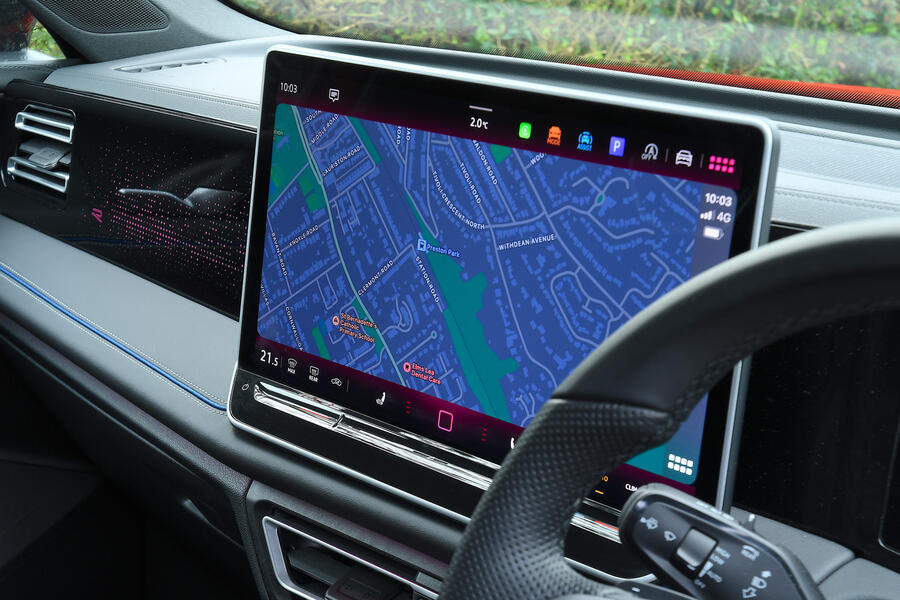
To Volkswagen’s credit, the AI is well integrated with the rest of the software in the Tiguan, not tacked on as an afterthought, being able to tell me the car’s current average MPG or change its drive mode.
Less impressive is that although I’m supposed to be able to wake the ChatGPT lady by saying “Hello Ida” or “Hello Volkswagen”, sometimes she ignores me and often she starts listening when I’ve said nothing of the sort.
I can choose my own activation word if I like, though, and it seems there’s no profanity filter. I’ll have a think…
The other day, I was driving home when I passed Brentford FC’s team bus (registration THE 833S – geddit?), which made me wonder if they had a game that evening.
So I asked Ida, and she promptly told me who they were playing against and when. Impressive. Intrigued, I then asked her to name some of the team’s players.
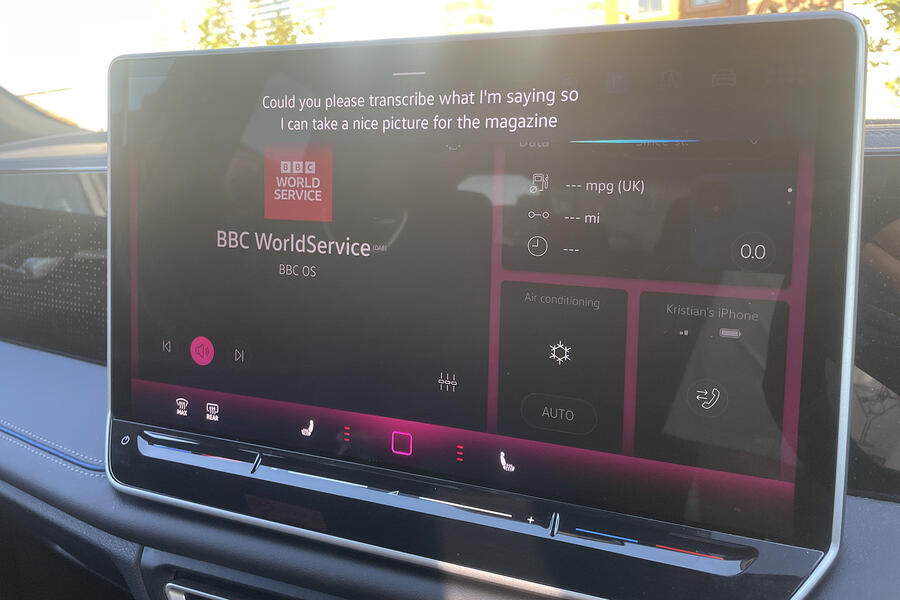
Two of the four she named had left years ago. Hmm… This speaks to a fundamental, larger problem with AI: unless it’s 100% accurate 100% of the time, you can’t trust anything it says. Not until it has banked some credibility, at least. And there’s often no way of digging into its code to see where it sourced its information from, to verify the claims being made.
Another time, demonstrating the Tiguan’s AI to a mate, I asked Ida about one of his favourite rock bands. But instead of talking about Tool, she gave us a dictionary definition of a tool…
While I remain unconvinced that having Ida in my car adds any value or makes my life easier today, given how quickly AI has worked its way into our everyday lives, there’s no telling what she might be capable of by the time the next Tiguan comes around – a simultaneously terrifying and exciting thought.
Perhaps by then Volkswagen will nally have squeezed all the glitches out of its own software, too. In addition to the issue of the steering wheel heating getting stuck on that I reported a few weeks ago, the rear-view camera is now going on strike as often as a train driver.
Instead of a video image of what’s behind me, I just get a black screen beside the graphic that turns amber or red to represent object proximity. And this isn’t an isolated incident: the same glitch aflicted our VW Tayron test car recently. That’s a brand-new model. Ay ay ay…
Update 3
So many mainstream cars these days offer a Sport driving mode, but usually it does little more than make an unpleasant-sounding engine rev harder and for longer, and as such I will try it once and then never touch it again.
This Tiguan, though, has been enhanced with the Dynamic Driving Package (for £1025), meaning its modes affect not just the powertrain but also the dampers and steering.
Having defaulted to normal (Eco) mode, I decided to drive home the other day in Sport mode – or at least I planned to. I lasted only about 15 miles before the constant jiggling over rough surfaces and thumping over potholes became too much for me to bear.
The latter is a problem with my particular Tiguan anyway, it being a sporty R-Line model on big, heavy, 20in wheels, but the experience needn’t be so bad. Indeed, when I switched over to Comfort mode, the difference was immediately noticeable: the jiggling faded away into serenity, the thumping reduced from frequent to occasional.

The steering also felt considerably lighter, which seemed more appropriate for town but not there on the motorway. Pleasingly, there’s an Individual mode that, once selected via the twist-and-press dial on the transmission tunnel (which doubles as an audio volume dial), can then be configured on the touchscreen. And, impressively, there are not just three shades of damping but a full 15.
After some experimentation, I settled on Comfort powertrain to keep the growling four-pot quiet, Comfort suspension to keep my vertebrae separated and Sport steering to take some of the effort out of keeping tracking straight.
Of course, there is an inherent oxymoron in testing Sport driving mode on a motorway, so I also took to a favourite countryside road, and here it makes a lot more sense: the firmer damping makes the car’s body control much tighter and gives it that added bit of traction through corners, which really does boost your confidence.
Although, of course, the problem of surface damage and thus discomfort is even worse on these less-valued roads. While the Tiguan is neither the most comfortable nor the most dynamic family car on the road, it’s a lot more talented than some SUV rivals.
It takes a sensible middle point on the spectrum and earns further credit for allowing you to push it more one way or the other. I only wish I were Christoph Cülmer of Bavaria, who could enjoy this Tiguan to its fullest potential.
Update 4
There are two kinds of cars in this world: Autocar cars and What Car? cars. I hasten to add that our friends on the other side of the office are no less enthusiastic than we are about performance cars and my Autocar colleagues are no less appreciative of a car that is sensible, practical and easy to own.
But a car that one would put on the front cover, the other would seldom mention. And it won’t surprise you to hear me say that the Tiguan is very much a What Car? car. How could it not be, with such an enormous boot?
When I had to do an airport run recently, popping my parents’ two carry-on suitcases in that 652-litre space looked almost silly: there was more space unused than used.
Indeed, the What Car? guys got nine of the things in there, helped by its regular, straight-sided shape. The rear seats have the ideal 40/20/40 split too, so you can take a third person along with long items of luggage (bikes, Ikea boxes). The only downside is that if you pick a plug-in hybrid instead of a pure-ICE Tiguan like mine, you lose 162 litres to the battery.

Nothing new with PHEVs, but still. A matter of personal priorities, I suppose. Family buyers will score the back seats very highly too. Even sixfooters don’t have to slump or tuck in their knees – something you can’t say about some rivals or most EVs, due to the thick batteries in their floors.
The Tiguan is right up there at the top with the Kia Sportage and Skoda Karoq in this regard. Nissan Qashqai, eat your heart out. Probably the one thing that will really give family car buyers pause for thought is the running costs.
My Tiguan doesn’t have an amazing official economy figure, and is falling below that in reality (although admittedly I’m always on the motorway), at around 35mpg. It’s quite a comedown from running a hybrid supermini, I can tell you.
Then again, the equivalent Sportage Hybrid scores only 38mpg on the extra-high-speed WLTP test cycle. So this is more of an SUV problem than a Tiguan problem, I reckon.
Am I boring you? Sorry if so. As discussed in my last report, there is actually some fun to be had from driving a Tiguan, at least if you spec yours with the selectable driving modes.
But, being honest, the dull aspects are by far the most important in a car like this. And, in classic VW style, the Tiguan is very good at pretty much all of them.
Final update
The new Volkswagen Tiguan is thoroughly unremarkable. Not long ago, such a statement would have been unambiguously damning, but at this present time, when we’re regularly driving cars with serious irritations or worse, stemming from an in ux of new brands and intrusive legislation, I actually consider it praise.
Somewhat qualified praise, I must say, but praise nonetheless. No matter the fact that the Tiguan isn’t the most comfortable, most dynamic, most efficient, most technically innovative or most daringly designed family SUV on the market right now, because it’s undeniably up there with its class rivals in each of those areas – making it generally competitive enough that potential buyers will find nothing to really put them off.
It’s a conventional, well-equipped, practical family car with no nasty vices. And, crucially, there is the brand power of Volkswagen behind it: seemingly no matter the car, that VW roundel indicates a combination of competence, modesty, reliability (whether perceived or actual) and, perhaps most importantly of all in this age of curiously named newcomers from afar, familiarity and therefore trustworthiness.
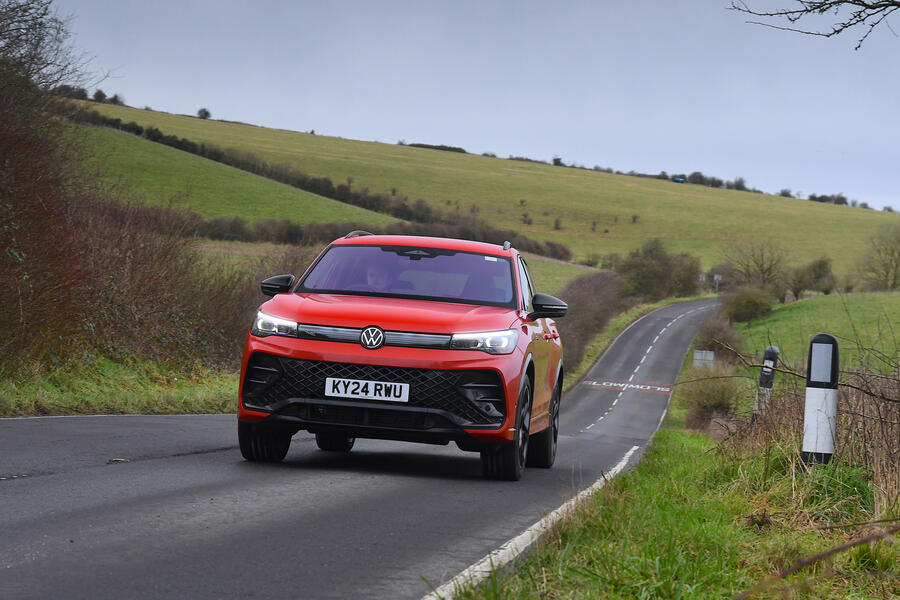
Just as hatchback buyers have for decades kept coming back to the Golf because it has always quietly done what they’ve needed it to without letting them down, so the Tiguan has over the past 18 years been doing the same for those who prefer their family cars of the higher-riding variety.
My own Tiguan had the lower powered 1.5-litre turbocharged petrol four-cylinder engine and a dual-clutch automatic gearbox – incidentally, the same as you get in a middling Golf – and this is a powertrain that I can wholeheartedly recommend.
Its 2.0-litre petrol relative makes the Tiguan fairly punchier, but frankly I never found it wanting for muscle, even when jostling for space on the M25 in rush hour.
Yes, the 2.0-litre diesel would have been ideal for me on my long-distance motorway commutes, because the 1.5 averaged a rather disappointing 36mpg during our time together, but most owners won’t drive their family Tiguans in the same way, and many will share concerns about the future viability of oil-burners.
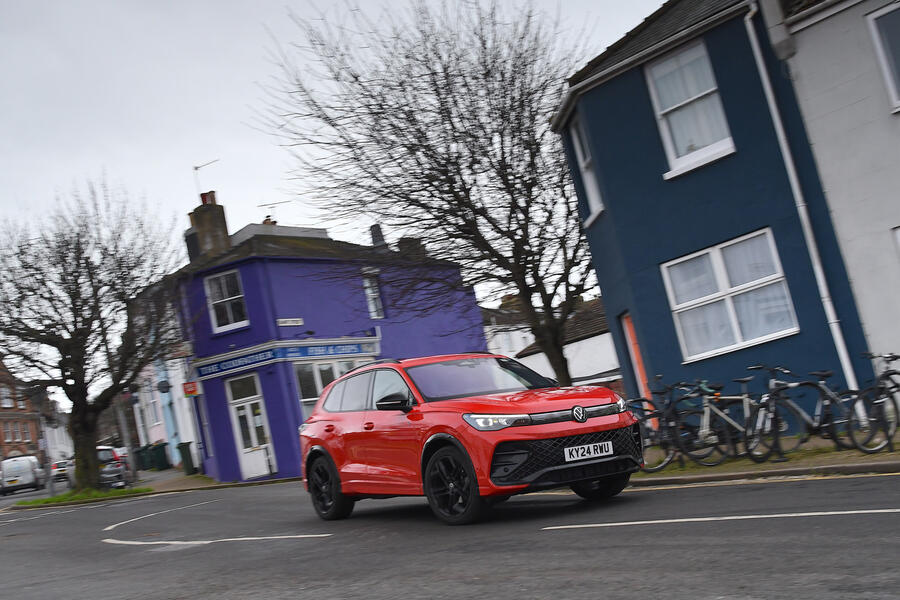
I would advise anyone to think carefully before ordering R-Line trim, however. The big, thin rubbered 20-inch alloy wheels and sportier-looking bumpers prove too enticing for many to resist, but the price you pay in terms of ride comfort may not be worth the gains in handling smarts.
If you do want R badges, at least add the Dynamic Driving Pack (£1025) that was fitted to my car, as this brings adaptive dampers with 15 selectable stages of firmness.
This allowed me to have a relatively so (if not clunk-free) ride to work, then tighter body control and extra traction on weekend blasts. I’d also consider the Infotainment Pack Plus (£1130), because it makes the touchscreen slightly larger (and therefore a tad easier to use, I’d imagine) and adds a head-up display – not something I tend to use, as I always find my eyes wanting to focus on the speed readout rather than my surroundings, but a highly desirable feature for many drivers.
If only there were another option to add in physical controls for the cabin climate – my biggest pet peeve nowadays. Volkswagen has improved its touch-sensitive ‘sliders’ by adding back-lighting for easier night use, but they’re still nowhere near as intuitive as a button or dial, and you still have to prod open a touchscreen menu to change any setting other than the temperature.
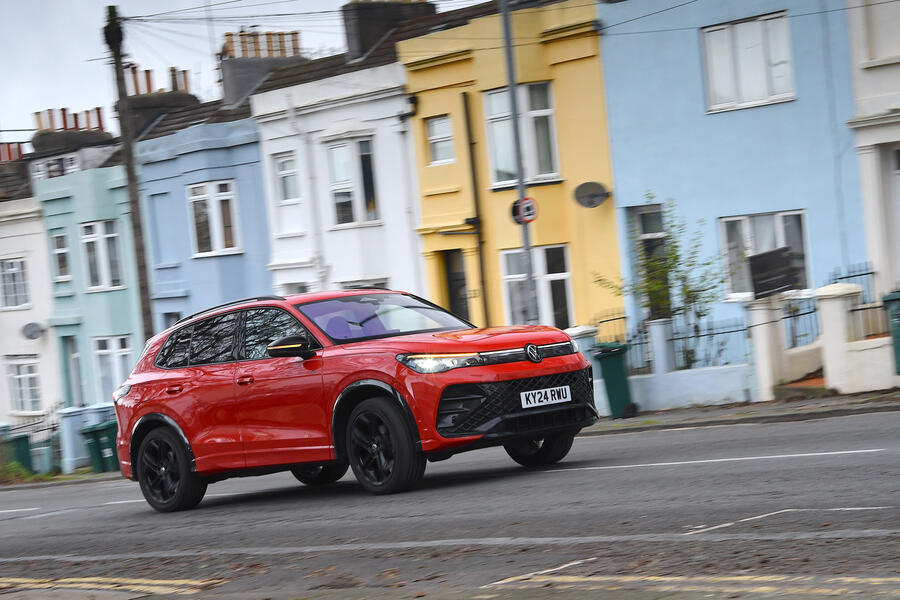
The software isn’t infallible, either, as uncomfortably demonstrated by the heated steering wheel’s refusal to turn off during one of my commutes, and the repeated absence of the rear camera image when I selected reverse gear.
It also had a curious habit of briefly disconnecting my phone from Apple CarPlay at the conclusion of a call. Volkswagen has got its act together since the glitch-ridden introduction of its latest digital ecosystem back in 2020, but still not entirely. I have more than once described this Tiguan to others as like how water tastes.
It is what it is. I was being flippant, of course, but there is actually something in that. You might enjoy a coffee, but while it will give you an energy boost, a caffeine crash later is inevitable. You might enjoy a few beers, but while they will li your spirits for a night, a headache the next morning is inevitable.
A glass of water tastes just fine and simply sustains you, giving you no ill effects. I embarked on this test back in March by asking why the Tiguan is so popular when it is seemingly so unremarkable, and why people pay extra to have one over a Golf.
I still think the Golf is the wiser buy, but I now can appreciate that the Tiguan’s unremarkable nature is actually a major factor – perhaps even the main one – in its continuing appeal.
Volkswagen Tiguan 1.5 eTSI 150PS R-Line specification
Prices: List price new £40,275 List price now £41,005 Price as tested £48,760
Options: Black Styling Pack £1255, Comfort Pack £1140, Infotainment Pack Plus £1130, towbar £1095, Dynamic Driving Pack £1025, Driver Assistance Pack £975, Persimmon Red metallic paint £810, IQ Light HD matrix headlights £595, Winter Pack £460
Fuel consumption and range: Claimed economy 43.2mpg Fuel tank 55 litres Test average 36.0mpg Test best 41.0mpg Test worst 32.4mpg Real-world range 436 miles
Tech highlights: 0-62mph 9.1sec Top speed 130mph Engine 4 cyls in line, 1498cc, turbocharged, petrol, plus ISG Max power 148bhp Max torque 184lb ft at 1500rpm Transmission 7-spd dual-clutch auto, FWD Boot capacity 625 litres Wheels 8.5Jx20in, alloy Tyres 255/40 R20, Continental ContiSportContact 5 Kerb weight 1541kg
Service and running costs: Contract hire rate £378pcm CO2 147g/km Service costs None Other costs None Fuel costs £618.62 Running costs inc fuel £618.62 Cost per mile 16 pence Faults Software glitches










